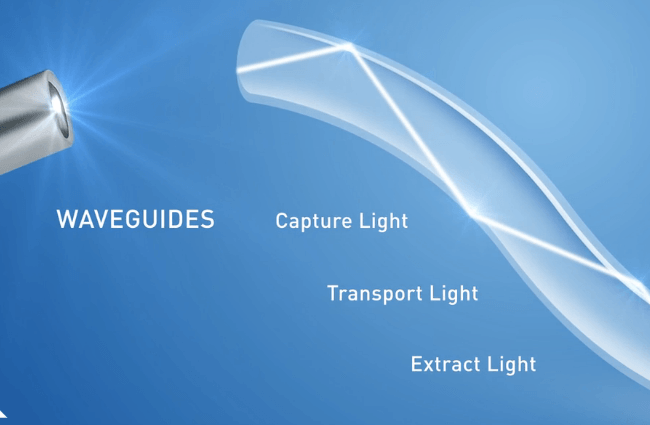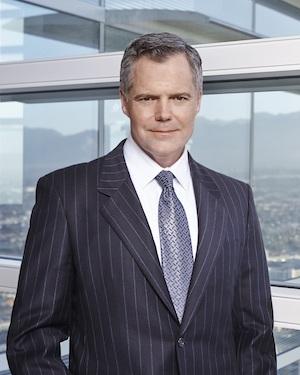Will Lyft Have Its Avis Moment?


The ridesharing market is probably not a winner-takes-it-all market, but can Lyft, who is no. 2 in the U.S. market, still succeed when Uber is so far ahead?
This I believe is one of the main questions investors who were approached earlier this year by Lyft had in mind. The company tried to provide some answers in a presentation it prepared for the investors, which was later leaked to Bloomberg.
Apparently, the investors were satisfied with the information Lyft presented as the company managed to raise $530 million in a series E funding, led by Japanese online shopping company Rakuten, which agreed to invest $300 million.
The leaked document provides some interesting insights into the growth of Lyft and the economics of its operations, but it still left me with one unanswered question:
Will Lyft have its Avis moment?
I’m referring to the efforts of Avis, the car rental company made in the 1960s to successfully compete against the market leader, Hertz. In 1962 Avis launched the “We Try Harder” ad campaign, with the tagline “When you’re only No. 2, you try harder. Or else.” This smart campaign made the point that as number two in the car rental market, Avis can’t take customers for granted and has no choice but to work harder. Hertz ignored the campaign and the result was that in just four years (1963-1966) “the market-share percentage gap between the two brands shrunk from 61–29 to 49–36.”
Lyft has a much larger gap to close. According to the leaked document, Lyft had 51,000 active drivers and 2.2 million monthly rides in 2014. Uber, on the other said in January that it has more than 160,000 active drivers in the U.S. who provide more than a million rides a day, the equivalent of about 30 million monthly rides. Hence, the ratio between Uber and Lyft in active drivers and rides in the U.S. is 3.14:1 and 13.6:1 respectively.
Before diving into the importance of having an Avis moment, I want to explain the importance of closing the gap for Lyft. Obviously Lyft wants to grow and have a larger share in the market, but it’s more than just growth inspirations – Lyft’s ability to succeed depends on scale. Lyft CEO Logan Green explained it in his 2015 SXSW Interactive Keynote:
“If you think about this network that we’re building, a great parallel is the wireless industry. It’s phenomenally expensive to put up 4G cellphone towers across the country…for us, our cell towers are having drivers, having a great driver about three minutes away. That’s the network. If you have 10 drivers in a city the closest driver is probably going to be 10-15 minutes away, but if you have 100 drivers in the city at the same time then the nearest driver is maybe 2 or 3 minutes away.”
In other words the ability of Lyft to effectively compete with Uber depends first and foremost on its ability to build a reliable network of drivers so customers can find an available driver whenever they want one, no matter where they are (within one of the 65 cities in the U.S. where Lyft operates) or what time of the day it is. This capacity-building effort is not only challenging, but also very expensive – according to the leaked report “Lyft estimates that the company spends a combined $530 on marketing to each driver and 22 passengers in San Francisco.”
This is why Lyft needs money and has been raising so far a total of around $800 million, which is impressive but still falls short of Uber’s $5 billion. Just for comparison, according to the New York Times other ridesharing services operating outside the U.S. like Kuaidi Dache and Didi Dache in China have raised more than $1 billion combined.
Still, taking care of the supply side is not enough. Even if Lyft builds a reliable network of drivers it still needs customers to choose Lyft over Uber. Finding how to make that happen at scale proves to be as challenging for Lyft as the effort to build its driver network.
Indeed why would one choose Lyft over Uber? In his SXSW keynote CEO Logan explained that “once you have a great, reliable driver just a few minutes away, you have a network to operate and compete, and when you are in that space you’re competing on experience and brand and the different type of services that you offer.”
Given that Uber and Lyft provide similar if not identical services and that once one of these players comes up with a new service the other one quickly offers it too, we should probably look at experience and brand as the best ways for Lyft to compete with Uber.
When it comes to the experience, price is not really a factor - there seems to be little to no difference in the price of similar Lyft and Uber services. In terms of the user experience, Lyft was hoping to make its experience more social, by encouraging passengers to fist-bump their driver, sit in the front seat just like you would with a friend and have a conversation with the driver. Yet, today Lyft exercises more flexibility (it’s OK to sit in the back seat and check your emails) and with more drivers working for both Lyft and Uber it seems more and more challenging to differentiate between the Uber and the Lyft ride experiences.
So we’re left with the brand. In the leaked presentation Uber was described “as a "top-down model," with an "exclusive mentality" and "anti-social culture."” Lyft, on the other hand was described as a "trusted brand" with a "social experience." I would add "fun" into the equation, although the pink mustache is no longer obligatory on Lyft cars.
The problem is that it might not be enough. Apparently most ridesharing customers don’t care enough about the "anti-social" behavior of Uber to switch to Lyft. While I support Lyft’s social values and their vision as expressed by Green (“making car ownership unnecessary. We never set out to make a good taxi cab”), I believe Lyft greatest challenge is to find its Avis moment.
It means not just showing everyone they work harder, but also making the case why people who just want a better taxi ride experience should use Lyft. If they get it right, they will win, even as no. 2.
Image credit: lizasperling, Flickr Creative Commons
Go For It: Energy Efficiency Is Still Dirt Cheap


A new study from Lawrence Berkeley National Laboratory (LBNL) demonstrates that investing in energy efficiency costs an average of just 4.6 cents per kilowatt hour. That's far below the average retail cost per kilowatt hour in the U.S., which has reached the 10-cent mark.
The new energy efficiency study is especially interesting because the folks at LBNL are billing it as the most comprehensive analysis of its kind, and because it was released just as the "war" over energy efficient lighting has erupted in Congress again.
Common Sense Confirmed: Energy Efficiency Pays Off
Nailing down the true cost of energy efficiency has become more urgent in today's energy landscape, because utilities are turning to energy efficiency as a cheaper alternative to building new power plants. New demand-response and energy storage strategies are also coming into play.
LBNL anticipates that utility customers will invest $9.5 billion in energy efficiency by 2025, based on previous studies. With that amount of cash in play, digging into the details of energy efficiency would help utility customers target their investment dollars as effectively as possible.
Getting a handle on energy efficiency costs will also play a role in the transition from fossil power plants to clean power, as required by new EPA regulations aimed at global warming management.
The new report was released last week under the somewhat overly descriptive title, "The Total Cost of Saving Electricity Through Utility Customer-Funded Energy Efficiency Programs: Estimates at the National, State, Sector and Program Level."
The report covers 20 state from 2009 to 2013, and as the title says, it deals with energy efficiency programs that are funded by utility customers. That's the big difference between it and previous surveys, which typically covered only the cost of efficiency investments to the utility or program administrator.
Here's the money quote from LNBL:
We now have a portrait of energy efficiency investments driven by utility programs. We can see exactly where utilities and their customers are turning to save energy. We are beginning to see how those investments—and costs—are shifting over time to tap new markets, technologies and strategies, including the combined application of information and behavioral sciences to reduce energy use.
For the commercial sector, costs were slightly higher than average but still low at 5.5 cents per kilowatt hour.
Costs and savings vary considerably from state to state, partly because some states are much farther advanced in promoting energy efficiency to utility customers. For a look at your state, the full report is available online from LBNL.
Energy Efficient Lighting Goes To War...Again
The new study shows that energy efficient lighting can be cheaper than the average energy efficiency investment. In the residential sector, for example, overall costs were 3.3 cents per kilowatt hour, and home lighting came in at only 1.8 cents.
With that in mind, it's no surprise that last week the Energy Department launched a new round of funding to push next generation energy efficient lighting into commercial production. Specifically, the new round of funding targets R&D for next-generation LEDs and OLEDs (organic LEDs).
Unfortunately, certain members of the U.S. Congress are not on board with the drive for more energy efficient lighting. Right on cue, the House of Representative passed a new measure aimed at suspending new energy efficiency standards for light bulbs.
If that sounds like deja vu all over again, you're right. The last time we covered the light bulb wars was back in 2012, and almost exactly the same thing happened:
The House of Representatives and the Department of Energy played out their own version of the zombie apocalypse last week, as the House voted to reanimate the all-but-dead incandescent light bulb and the Energy Department countered with the announcement of $7 million more in funding to develop new, more energy efficient lighting technologies.
Be that as it may, we're looking forward to a new wave of energy efficient lighting technologies that break through the LED cost "tipping point."
One good example is the U.S. company Cree, which has developed a new high efficiency LED platform it calls WaveMax. Cree has won a grant under the latest round of Energy Department funding to go even farther with new "high-efficacy, cost-effective LED light engines" that incorporate "novel chip, down converter, and package geometries into a demonstration luminaire that exhibits a steady-state efficacy of >150 lm/W at 3000K and 90 CRI."
That's a lot to look forward to, so stay tuned.
Image credit (screenshot): WaveMax™ LED platform courtesy of Cree.
Trash as Treasure: From Setting to Surpassing the Bar on Waste Reduction


By Jeff Gowdy
Whether a sustainability expert or newcomer, those who work in this industry will be the first to tell you that ‘sustainability’ can be an illusive, rarely agreed-upon and poorly defined term. But as Tony Robbins said, “Setting goals is the first step in turning the invisible into the visible.”
The sustainability issue that I consider the most visible, or tangible, for companies to grasp, is waste. This explains why it is often the first thing a company will tackle, particularly when it comes to those that manufacture goods.
Wherever a company falls along the spectrum – whether that’s trying to be a just a little greener, a zero waste-to-landfiller or a trend-setting visionary – everybody has to start somewhere.
It’s not easy being “Greener”
In my consulting experience*, it’s important to meet companies where they are currently. That usually means helping them come up with small, bite-sized goals, which are easier to “sell in” to the decision-makers up top.
Companies first venturing out on their sustainability journey, the Greeners, typically start with a goal that looks at reducing a certain percentage of waste within their operations that they know is achievable within a short period of time.
Then once they’ve got some real data results to work with, they are able to go back to the C-Suite and propose more long-term, cross-cutting goals. This kind of relentless incrementalism is critical in the beginning stages of building a waste management program.
These incremental goals most commonly set reductions in the range of 1-25 percent. For example:
- Reduce specific generated wastes from routine operations by five percent by 2015 (baseline: 2010) (MOL Hungarian Oil & Gas)
- Reduce waste generation by 15 percent (Wellpoint)
- Reduce volume of waste disposed of in landfills by 24 percent, relative to fiscal 2010 (Sumitomo Chemical)
This realistic goal-setting helps establish a baseline that makes management more confident and comfortable giving the green light to move to the next level.
Zero is the Loneliest Number, but a Good Kind of Lonely
Once a company realizes that these incremental steps can add up to big cost savings and discernable environmental impact, companies like Walmart and Toyota aim to take waste out of their business’ equation altogether – setting their sites on being Zero Waste-to-Landfillers.
The scope of this kind of goal is usually laser-focused on manufacturing facilities and/or retail locations, as those are the areas of the business where the company has the most control over the waste generated.
For example, Walmart’s goal is to eliminate landfill waste from U.S. stores and Sam’s Club locations by 2025, while Toyota’s is to achieve zero waste to landfill at manufacturing plants by 2013.
A Vision Beyond "End of Life"
For a few rare companies, achieving zero waste within their own operations simply isn’t enough – they set their sights on waste reduction throughout their entire value chain, and better still, aim to influence their industry at large.
These are what I call the waste Visionaries. Bridgestone and Honda exemplify this mindset. Honda is challenging itself to completely close the loop for all resources and bring product life-cycle waste down to zero, and Bridgestone seeks to create a waste-free tire industry with programs like the “Tires 4ward Program,” which ensures that for every tire sold, one spent tire will be sent to a next, valuable use.
This ‘cradle to cradle’ mentality is one where companies don’t see waste; they see a second, third, fourth life for those materials – new products and revenue streams. In other words, product “end of life” is out of their vocabulary.
This game-changing approach is the future of waste reduction goal setting – and one I think will inspire industries to think “outside the landfill.”
*Note: goals included were pulled from the PivotGoals.com website.
Jeff Gowdy is the project manager for the Pivot Goals project and also has served as a consultant for Bridgestone Americas.
Image credit: Flickr/wintertwined
The Women's Leadership Conference -- Back In Las Vegas


By Jim Murren
In 2007, MGM Resorts International partnered with community organizations and Las Vegas businesses to create an event that has evolved to the Women’s Leadership Conference. This year's conference is July 13 & 14 at MGM Grand Las Vegas.
The idea behind the conference – or WLC – is to provide women and their colleagues with an enrichment experience that will help them advance in their professional roles. A nonprofit event, we view WLC as an opportunity to enrich our communities and pay it forward to the organizations in our communities who support the growth and resilience of girls and women. All proceeds collected from the conference, after costs, are donated.
After last year's conference, $30,000 was donated to WestCare Nevada’s Women and Children’s Campus, a place that provides a variety of services to women and families including counseling and substance abuse treatment, health education and wellness, transitional housing, and more.
Why a conference to further develop gender diversity and leadership?
According to the U.S. Department of Labor, women are a powerful demographic in the U.S. workforce. In 2010, they comprised 46.8 percent of the total U.S. labor force. They are also expanding their roles, taking on more leadership and entrepreneurial opportunities. In recent years, women-owned businesses have become a major force in the U.S. economy; since 2007, they have employed 7.6 million workers and reported $1.2 trillion in sales.
Last year’s conference drew a record crowd with more than 900 people attending signifying that communities and their women are seeking guidance on how to grow in their professional lives. As a testament, a large percentage of attendees return yearly to network, receive training, and attend workshops and keynote addresses that touch on topics that have a real and lasting impact on their careers.
This year, again, we have incredible workshops touching on personal branding, innovation in the workplace, creating a strategic career plan, making the right impression and more. In addition, we'll also have a lineup of world class speakers, along with the type of great food and entertainment you would expect at an MGM Resorts resort.
When MGM Resorts adopted its diversity policy and program in 2000, it became an essential business paradigm for success in the modern global economy. It also provided us with an opportunity to do further good. In this way, WLC provides an opportunity to have a positive impact on women and their personal and professional lives.
As we continue to expand globally, diversity is playing a larger role than ever. A company cannot succeed on the global landscape today – forming partnerships and operating around the world – unless it embraces diversity. While there is still much to do, we are proud that more than 60 percent of our employees represent minorities and more than one third of our senior leaders – and climbing – are women. Forty three percent of our management ranks are women. MGM Resorts was the first company to promote a woman, Renee West, to president of a Las Vegas Strip resort.
Through the WLC, we hope to amplify on the stories and experiences of successful women leaders as they serve as a guide to other women, and the companies who are enlightened and looking for ways to better engage their workforce, while enriching their communities.
I hope that you will mark your calendar, and join us at the Women’s Leadership Conference.
Jim Murren is Chairman and CEO of MGM Resorts International. He leads a company of 62,000 employees that provides world-class hospitality and entertainment experiences through its 15 resorts properties in Las Vegas and Reno, Nev., Michigan and Mississippi. A leader in the area of corporate responsibility, Mr. Murren is Executive Chairman of the Board of Directors of the Corporate Responsibility Officers Association, a professional society for corporate responsibility practitioners. In 2013, he was named a Responsible CEO of the Year by CR Magazine. Casino Journal magazine named him its 2013 Executive of the Year.
Go Nuts with Ferrero's Hazelnut Carton Board Packaging


Ferrero, the world’s largest chocolate producer as well as the world’s biggest buyer of hazelnuts for its delicious Nutella spread, has devised a cool way to use all of those hazelnut shells laying around.
The waste shells could be composted, of course, but more practically, the Italian company is planning to use the shells’ natural wrapping to create packaging for its chocolates.
Ferrero has teamed up with renewable packaging company Stora Enso, and PTS, a German foundation that researches and consults on fiber-based product development, to develop so-called EcoPaper as part of a €1.2 million (£870 million) ($1.35 million) project, which is 50 percent funded by the European Union.
Miguel Sánchez, manager at the Stora Enso Barcelona mill, says that visually there is no way to tell a hazelnut board apart from regular carton board. He adds: “We are still experimenting on the ideal mixture of nutshell fibers in the pulp, but so far it works well for stiffness and bulk. The hazelnut fibers are used in the board’s middle layer and have been tested for allergy aspects without any problems.”
The project is now in a preindustrial testing phase that ends later this year.
“After that we can hopefully see hazelnut chocolate packed with board based on hazel nut shell fibers,” Sanchez says.
"This way 100% of the hazelnut is used and nothing needs to go to waste. In the future you will be able to buy chocolate with hazelnuts wrapped in hazelnut board. That is a good way of using resources. We are even making tests with cocoa skin as a raw material for fiber in pulp, but that is still in a very early stage."
As the the world’s biggest buyer of hazelnuts, Ferrero uses 25 percent of the world’s supply to make 180 million kilograms (397 million pounds) of its Nutella spread each year.
This particular shell game scores with shell packaging. Benissimo!
World’s Largest Supplier of Rayon Commits to Sustainable Sourcing


Sustainable fashion lovers have something to cheer about. Aditya Birla, global maker of viscose fibers, better known as rayon, has a new fiber sourcing policy. It’s a policy that seeks to embed sustainable sourcing into company’s supply chain. The main aim of the new policy is to stop sourcing from ancient and endangered forests. The world’s largest producer of viscose, the company makes about 20 percent of the world’s supply which is manufactured from wood pulp.
The fiber sourcing policy states that the company will “implement its best efforts” to avoid sourcing and trading wood fiber that has been harvested illegally, in violation of civil rights, from uncertified high conservation value forests, from plantations, and harvested from ancient and endangered forests. Aditya Birla’s fiber sourcing policy applies to wood and pulp sourcing for all its mills.
“We’re committed to avoiding any endangered forest fibre in our products and are excited to help drive innovation in the development of fabrics made from new fibres that reduce the pressure on the world’s natural forests”, said Kumar Mangalam Birla, Chairman of the Aditya Birla Group, in a statement. “We and many of our customers in the fashion industry are equally committed to developing sustainable business solutions that help conserve forests and species.”
Aditya Birla worked with Canopy, a forestry nonprofit, to develop the sourcing guidelines. Canopy collaborates with 700+ companies on timber sourcing policies.
“Aditya Birla’s global forest sourcing criteria sets a high bar for all other producers to meet,” said Nicole Rycroft, Canopy’s founder and executive director. “We’re very excited to continue our collaborative work with the Aditya Birla team as we help them translate this bold policy into action.”
The pulp production sector continues to grow by about 10 percent per year, according to Canopy’s report, A Snapshot of Change. If the sector continues to grow at that pace, total global production will more than double within the next decade. A good share of dissolving pulp goes into clothing production. Presently, 10 major man-made cellulosic fiber producers provide about 80 percent of the global supply of viscose fiber.
The good news is that sustainably sourcing pulp is becoming a trend in the clothing sector. In 2013, Canopy launched the Fashion Loved by Forest initiative. Since the launch of the campaign, over 25 clothing companies representing over $75 billion in annual sales have made commitments to sourcing sustainably and protecting the world’s forests. These companies include H&M and Zara/Inditex, the world’s largest clothing brands. Both brands have made commitments to stop sourcing from endangered forests by 2017. Other brands have made similar commitments, including Stella McCartney, Levi Strauss & Co. and Marks & Spencer.
Photo: Flickr/Dejan H.
Used Cooking Oil Wreaks Havoc on Sewers


By Robert Conrad
As a former restaurant manager, one issue I had to continually be vigilant about was the proper disposal of cooking oil and cleaning chemicals. As many of my former employees were young people, they didn't quite understand the impact that improper disposal had on restaurant property and, ultimately, the environment. If the problem was not in sight, it was out of mind.
Unfortunately, this resulted in numerous health code violations, one of which included dumping dirty oil directly down sink drains. In fact, a 10-ton lump of congealed fat and wipes was recently discovered in a London sewer, which left nearby residents unable to flush their toilets. The cause of these "fatbergs" was residents dumping their cooking oil down the drain, where it congealed after hitting cold water and simply grew over time. According to The Guardian, this most recent instance was projected to cost the city of London $600,000.
The funny part is that calls to protect the environment are nothing new in England. Notable names throughout history, such as Adam Smith, David Hume and John Stuart Mill, have decried careless practices that can impact the environment negatively. Oily substances improperly disposed of can contaminate groundwater and coat unwitting plants and animals, who then can potentially suffocate from oxygen depletion. The EPA issued a revised rule in 2000 that includes the following changes:
- Specifies methodology for calculating planning volumes for a worst-case discharge of animal fats and vegetable oils;
- Separates regulatory sections for animal fats and vegetable oils;
- Keeps requirements for the same three response planning scenarios (small, medium and worst-case discharge) as in the original FRP rule;
- Adds new definitions for animal fats and vegetable oils; and
- Differentiates between classes of oils by establishing new groups of oils termed Group A, B and C, based on the specific gravity of animal fats and vegetable oils.
The new rule regulates the disposal of lard, as well as tallow, corn, rapeseed and soybean oils, all of which are widely used in eating establishments. Many restaurants have a dedicated vessel where their waste oil is dumped, normally located in a dumpster area that is sloped to a waste drain. Unfortunately, some of these drains also function as a storm drain, which can mean the introduction of cooking oil into the groundwater or cause disease-spreading sewage backups in the restaurant itself.
What's being done now
To encourage proper waste oil disposal, some companies, such as Waste Oil Recyclers and Tri-State Biodiesel, have offered their pickup services and a waste container to store spent oil for free. However, it is up to the restaurant to ensure that there is a proper filtration/transportation system to prevent spills. Further, it's important for restaurant owners to ensure that the area where the container is stored does not contain a storm drain. The focus should be spill prevention during used oil transport, but in the event that spills occur, they should be cleaned up quickly using best practices.
The costs of improper disposal methods are high, with Buncombe County spending $200,000 on sewage repairs and $90,000 on sewer maintenance. With so many companies willing to offer free pickup and a container, there's no good reason why establishments that use cooking oil shouldn't take advantage of this service. Further, used cooking oil of any type can be repurposed into biodiesel fuel for use in converted car engines. Biodiesel burns cleaner than fossil fuels and produces no adverse impact on global warming. Since this discovery, there have been worldwide initiatives to reduce carbon-based energy generation, such as the Regional Greenhouse Gas Initiative, which aims to reduce carbon dioxide emissions 10 percent by 2018.
Another notable effort to repurpose used cooking oil is the Illini Biodiesel Initiative, a registered student organization at the University of Illinois that collects around 100 gallons of oil and transports it to Research Park. The oil is then put in a thermal reactor and converted into biodiesel. Even better, the oil is sold back to the university to be used in campus vehicles. The organization earns about $2 per gallon of used oil, with all proceeds reinvested back into the initiative.
Bottom line: Restaurant owners need to properly train their staff on proper cooking oil disposal to ensure that no oil will enter the sewers. The benefits of doing so not only ensures that no contaminants will enter the water supply, but can also provide a ready use for conversion to cleaner-burning fuel. Companies such as Grease Car offer conversion kits, which are relatively inexpensive considering the cost of regular petroleum, and the fact that biodiesel burns much cleaner only adds to the benefit.
Organizations such as these have one goal in mind: reduce emissions and ensure our long-term sustainability through repurposing a product that was once deemed useless after its prime.
Image credit: MalayaliClassifieds
Environment must be 'at heart of new Government's thinking'


Crucial environment issues must be “at the heart of new Government’s thinking”, says a new survey from the Institute of Environmental Management Assessment (IEMA).
In a series of polls with its 15,000 members, the association has drawn up a sustainability action plan.
One of the key actions is to make significant progress on improving the UK’s poor air quality during the next parliament. Almost 9 in 10 of IEMA’s respondents say that this is a critical priority for the new Government. Making significant progress on improvements to air quality will benefit the environment as well as human health and wellbeing, as poor air quality is currently linked to 29,000 premature deaths each year. This statistic backs the recent ruling by the Supreme Court that the UK must cut its air pollution levels.
The professionals polled are also calling for the new Government to make energy conservation and efficient use of materials a top priority. They also said that in order to drive environmental achievements, the creation of a sustainable workforce is vital. Over 90% of those surveyed said that the government should establish a cross-sector sustainability skills strategy to enable the UK to transition to a sustainable economy. Over 85% say STEM skills should be extended to incorporate Sustainability (becoming STEMS), and sustainability should be a vital part of national curriculum and part of lifelong learning.
Martin Baxter, chief policy advisor at the IEMA said: “The new Government must put a green and sustainable economy at the heart of its future plans, supporting new jobs and enhancing business competitiveness. Investment in skills for a sustainable economy will be critical to long-term prosperity.”
David Cameron’s commitment to ‘One Nation’ needs to be underpinned by a commitment to ‘One Planet’. Central to this will be climate leadership – domestically in meeting carbon budgets and internationally with support for an international agreement in Paris.”
Whitbread to set sugar and salt reduction targets


Setting 'relevant' sugar and salt reductions across its menus is one of Whitbread's new CR commitments.
The owner of the Premier Inn franchise and the Costa coffee chain has announced a series of new Good Together 2020 targets after making 'significant progress' towards exisitng 2017 goals. The Good Together programme was launched in 2009 and is built around three pillars of Teams & Communities, Customer Wellbeing and Environment.
The sugar and salt reduction pledge comes under its Customer Wellbeing pillar which also now incorporates a commitment o achieve 100% accredited supply for 10 critical product sourced commodities (cocoa, coffee, cotton, fish, meat, palm oil, soy, sugar, tea and timber).
Under its Teams & Communities banner, the company is to further increasing employment opportunities in the hospitality industry, planning to create 15,000 UK jobs, 7,500 work experience placements for school and college pupils and 6,500 structured employment placements over the next five years.
On the energy front, having already exceeded its 2017 carbon, water and waste targets Whitbread has set new 2020 targets to reduce carbon by a further 15% and water by 20%, both against a 2014 baseline, and to increase the direct operations recycling rate across the estate to 80%.
Simon Ewins, director of CSR at Whitbread Hotels and Restaurants commented: “At Whitbread, we set ourselves stretching targets across our business and our corporate responsibility commitments are no exception. We are incredibly proud of the progress we have made towards our existing 2017 targets, and in line with our wider business approach, it was important for us to review these achievements and push ourselves further to achieve more.
"We would encourage all businesses to look at how they can further enhance their environmental and societal impact and would invite business leaders to work with us to share best practice across this common aim of a more sustainable future.”
Wildlife takes off at London Heathrow


Heathrow Airport has been awarded the Wildlife Trust’s Biodiversity Benchmark for the seventh year running. The award is the only national award recognising responsible land management. Independent assessors visit over 40 organisations sites to judge their compliance against a stringent set of environmental requirements.
Heathrow’s biodiversity engineers manage a total of three 3 biodiversity sites at the airport which are home to a variety of British wildlife including stoats, weasels and toads. This year the airport has counted a record number of moths as well as a number of rare and notable species such as: Bee Orchids, Cetti’s Warblers and Nathusius’ Pipistrelle Bats.
The airport’s success is not only restricted to the furry, scaly or feathery: Heathrow also holds the last known wild population of Water Avens, a flowering plant with a distinctive purple colour, in Greater London.
Matt Gorman, Heathrow's director of environment and sustainability said: “People may be surprised that Heathrow manages more than just runways and terminals, and that we have a species count rivalling the London Zoo within the airport grounds.
"Protecting and fostering these species is an important part of being a responsible business and yet another way in which Heathrow can give something back to the communities around us.”